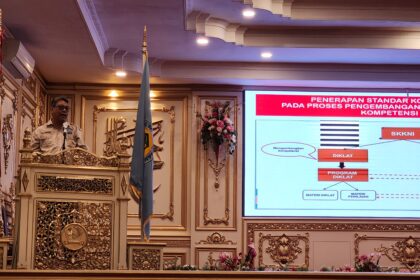[ad_1]
The next time you are in Chongquin, download the Baidu transportation app and hop a ride on the most advanced bus in the world.
You won’t be able to chat up the driver, either — as the bus passes by two scenic lakes, two universities and an urban park — that’s because there is no driver!
Baidu’s autonomous-driving arm — aptly named Apollo — said this week it was granted rights to roll out a commercial self-driving bus program in the west of China, Barron’s magazine reported.
The launch in the metropolis of Chongqing — with a population of more than 30 million people, greater than the entire country of Australia — will be China’s first self-driving bus operation, Baidu said.
Baidu has previously passed a restricted non-commercial pilot project in the area.
The commercial service will be on a limited route in a specific area — about 10 kilometers (6.2 miles). The company previously passed a restricted non-commercial pilot project before it got the green light, Barron’s reported.
Travelers are required to book trips via one of Baidu’s multiple transportation apps.
“The cooperation between Chongqing and Baidu Apollo has been greatly upgraded,†Baidu said in a statement.
“The two parties have reached a strategic co-operation that will help the city become a benchmark for the national smart transportation industry in the future.â€
That co-operation includes future expansion with other vehicle types, a battery charging infrastructure, and the two sides furthering “vehicle-road collaboration,†according to the statement.
 According to sources, Apollo is able to perceive the surroundings and HD (high-definition) map data in real time, plan the optimized routes and make proper driving decisions through predicting the actions and intentions of vehicles and pedestrians, Barron’s reported.
While Baidu is the first to see commercial realization of an autonomous bus project, Nissan-backed WeRide in January launched a fleet of robo buses in a confined government industrial complex in the southern city of Guangzhou.
On Monday, the California Department of Motor Vehicles authorized WeRide to test driverless vehicles on public roads in San Jose, Barron’s reported.
California’s DMV rules for the driverless permit involve hefty requirements, including US$5 million in insurance, ongoing contact with local governments and law enforcement, and previous testing “under controlled conditions that simulate the planned area of operation,†the DMV said on its website.
Last year, Baidu launched robotaxi services in Beijing, the central Chinese city of Changsha, and in Cangzhou, a city in Hebei province, which encircles Beijing.
Those projects are free for riders, but require registering through a Baidu app, and the vehicles contain a stand-by driver in case of malfunctions.
Baidu is not merely focused on engineering self-driving vehicles.
Its DuerOS Internet-of-Things software has pushed ahead to become China’s leading platform for in-ride advertising and entertainment for passengers in its suite of autonomous vehicles, Barron’s reported.
Autonomous driving in China got off to an ambitious start in recent years.
However, technical difficulties, exacerbated by the coronavirus pandemic, caused officials to delay that date to 2025, the National Development and Reform Commission and the Ministry of Industry and Information Technology said in a 2020 release.
The crowded global field of autonomous vehicles has seen similar setbacks.Â
Singapore’s Grab Holdings — which said it plans to go public in New York this week via a special purpose acquisition company, or SPAC, with an expected valuation near $US40 billion — began trials at home as early as 2016, though subsequent advances have been slow.
Other players at the forefront of autonomous driving include Tesla’s FSD, General Motors’ subsidiary Cruise, Amazon.com-owned Zoox, China’s Alibaba Group Holding-backed AutoX, and NYSE-listed Xpeng.
[ad_2]
Source link










